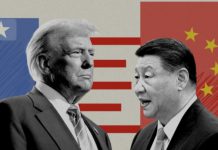Two years ago, on 26 May, the Narendra Modi-government took office amid chest-thumping of a landslide victory and promise of ‘achhe din’ to a billion Indians, after a disappointing UPA regime. How Modi has performed in two years after securing such a huge mandate? The answer depends on who you would ask and in what specific context.
Prime Minister Narendra Modi. PTIPrime Minister Narendra Modi. PTI
In 2 years, Modi has hard sold the India brand in his foreign trips like no other prime minister has done before, smartly packaged schemes under catchy slogans, plugged subsidy leakages through DBT (direct benefit transfer) and pushed the economic reform agenda through small steps. That’s how an optimist would summarize Modi’s 2 years.
But, then there are critics such as Arun Shourie, who would offer a counter argument calling the NDA government a ‘one man show’. Going by this view, Modi is mostly managing headlines than addressing the actual problems in the economy. India’s 7.6% GDP growth is a mirage when the manufacturing sector is faltering, corporate earnings remain muted, exports are down for 16-months and unemployment has risen.
Modi hasn’t done miracle in the Indian economy in his 2-year tenure. But, the former Gujarat chief minister isn’t a disappointment as a PM either, even his critics would agree.
Let’s be fair, Modi inherited an economy in deep mess, paralysed with corruption, slow decision making process and burden of self-imposed sky-high expectations. The new government needed time to identify the problems first and then begin work to clear the mess. Reversing the growth cycle is a time consuming process. Modi’s tenure, hence, will be assessed based on the remaining three years of his tenure than the gone two years.
As far as economy is concerned, answer to the three following questions will be used to write his final report card.
Can Modi avert a banking crisis?
The biggest issue, which the Modi government hasn’t either understood well or underestimated so far, is the banking sector mess. The bad loan crisis in the country’s Rs 101 lakh core banking sector can potentially upset the country’s economic picture for the next several years, if the government fails to get the solution right.
Here’s where things stand: At least 11% of the total loans in the banking sector are tagged under the stressed asset category. The Reserve Bank of India (RBI) beginning the clean-up exercise has shown the actual depth of the trouble on the books of Indian banks (hidden bad loans), especially state-run lenders. With over 90% of the total bad loans (of Rs 4,00,000 crore) on the books of sarkari banks controlled by the government, the onus of capitalising these lenders and making growth capital available to them is on the government.
In the March-quarter, PSU banks have reported record level of bad loans. The clean-up is good sooner than later, the question is whether the government has an action plan to address the problem. What it has already announced — Rs 70,000 crore by 2019 — is too little and has come too late.
Can Modi pull off project GST?
The BJP’s landslide victory in the 2014 Lok Sabha elections has been of little help to the Modi government to get large ticket reforms such as GST passed due to the party’s weak position in the upper house. The biggest casualty is the GST. Though the government has managed to push some of the reform bills — Aadhaar and bankruptcy code — the promise of GST clearance remains a big disappointment to international investors. That’s a reform which can take the country’s GDP by a few notches up subsuming several state level levies and thus broadening the tax base
Of the three major demands the Congress party has raised on GST — inclusion of the GST rate in the constitution, doing away with the inter-state levy and constituting an independent dispute resolution mechanism — only the only major point of difference is capping GST in the Bill.
The Congress party is unlikely to give in and is likely to render it a major task for Modi, even if the party may improve its numbers in the Rajya Sabha in 2016-17.
“While the ruling party is likely to gain more seats in the upper house of parliament in 2016, it will fall short of the two-thirds majority required to push through the GST legislation,” said Standard Chartered in a note on 17 May.
The recent state elections don’t make any major difference for the BJP in the Rajya Sabha.
“Its victory in Assam today is not expected to increase its seat share in the upper house during the current term of the government, as the next set of Assam’s seats come up for renewal only after the government’s current term ends in May 2019,” said Pranjul Bhandari, Chief India Economist at HSBC.
The only way out for Modi and his party to get the project GST done is to gather the support of the small parties.
Can Modi regain the investor confidence?
Despite his numerous foreign trips and the promise of ease of doing business, the fact is the Modi has not yet managed to get the investor confidence back as evident from shallow private investments. The absence of revival in the private investment cycle has put the entire onus of firing up the economy on the government, which is fiscally constraint. There aren’t any strong growth triggers yet.
“India needs structural reforms in order to move sustainably onto a higher growth trajectory. In addition to GST implementation, these include supply-side measures to achieve medium-term food-price stability, and banking-sector reforms. Progress in these areas has been slower than expected,” StanChart said. This is even more critical now since the pile of stalled projects has begun to pick up after a brief decline.
This chunk has gone up from Rs 9.6 lakh crore in the fourth quarter of fiscal year 2015 to Rs 11.4 lakh crore in the fourth quarter of fiscal year 2016. Absence of fresh private investments becomes even a greater problem in the backdrop of bank funding drying up on account of huge NPAs and capital scarcity (in the case of state-run banks).
Besides, these three critical targets to be achieved, it is equally important to see if the Modi government can prepare the economy less export-dependent. A crash in global commodity prices and slowdown in some of the largest economies like China have resulted in Indian exports dropping the 17th straight month in April. This’ll be even more serious concern in the days ahead. In a world of uncertainties, the only way is to boost the local demand and gradually bring down dependence on exports. Remember, Modi was lucky to have the benefit of low crude oil prices so far that has helped to lower import bill and cool off inflation. But, there is no guarantee that luck will remain forever.
The two years of the Modi government doesn’t have any big achievements to show on its report card that has translated into actual economic growth and job creation. Nobody looks at the 7.6% growth with full conviction yet. But, this period has indeed set stage for growth by initiating the reforms process such as bank clean-up, Aadhaar-linked direct benefit transfer for subsidy roll out, bankruptcy law.
Ahead of the 2019 general elections, the next three years are highly important for Modi as the observers will watch if the government leverages on these positives. Modi needs to focus on his promise of good governance and make his government controversy-free to the extent possible by gagging the motor mouths and loose cannons in the party. There is no time for distractions.(with thanks F,20)
















